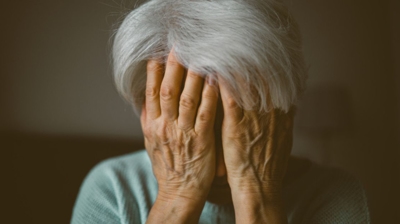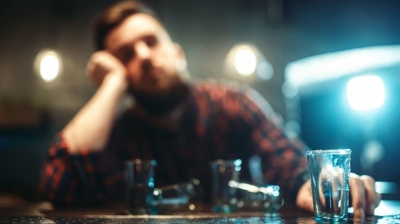Determining who is at fault in an intersection accident can be a complex issue. Ultimately, it comes down to identifying the driver or drivers who did not have the “right of way” at the time of the collision.
Right of way refers to the privilege to proceed first in different traffic situations. The right of way can depend on a variety of factors such as road signs, traffic signals and the type of intersection. The driver who did not have the right of way is at fault in an intersection accident.
Below, we’ll take a detailed look at intersection accidents and discuss how victims can protect their rights and seek compensation for their injuries.
If you or someone you love was injured in an intersection car accident, the car crash attorneys at Niemeyer, Grebel and Kruse are here to help. Call (314) 350-1900 for your free consultation.
What are the leading causes of intersection accidents?
Every day, countless vehicles pass through intersections, and while most of these encounters are uneventful, some unfortunately lead to car accidents. The primary contributing factors to intersection car accidents are distracted driving, failure to yield and running red lights or stop signs.
Distracted driving
Distracted driving refers to any activity that diverts attention from driving, including talking or texting on your phone, eating, drinking, talking to people in your vehicle, or fiddling with the stereo. It is a dangerous practice as it not only endangers the driver but also passengers, bystanders and other road users.
Failure to yield
Failure to yield is a situation where a driver does not adhere to the established right-of-way rules at an intersection. At intersections, we commonly see this as drivers turning left across oncoming traffic without leaving enough space to do so safely.
Running red lights and stop signs
In a stop sign intersection, drivers who approach the intersection must be aware of who arrived first to determine the right of way. When both drivers reach the same place at the same time, the driver turning left is expected to give way to the other driver. The other driver can either be turning right, or going straight.
In order to establish liability in a stop sign intersection accident, it’s helpful to obtain a police report.
Types of intersection accidents
Intersection accidents come in various forms, including left-turn collisions, T-bone crashes, and rear-end collisions, each with unique circumstances and potential injuries. Serious injuries and even car accident fatalities can result from these types of intersection collisions, making it crucial to understand and prevent intersection collision.
Left-turn collisions
Left-turn collisions usually happen when a driver makes a left turn at an intersection in front of oncoming traffic. In these cases, the driver making the left turn is expected to yield to oncoming traffic, unless they have a protected turning arrow signal.
T-bone crashes
T-bone crashes occur when one vehicle impacts the side of another. At intersections, we typically see this when one driver runs a red light or stop sign into cross-traffic. Like left-turn collisions, these are straightforward situations to assign fault. The driver who ran the light or sign is responsible for the collision.
Rear-end collisions
Rear-end collisions at intersections can occur when a driver fails to stop in time, often resulting in the rear-ending driver being at fault. Generally, the driver in the rear is held responsible for rear-end accidents.
How do authorities determine fault in an intersection car accident?
Determining fault in intersection accidents involves a combination of police investigations, witness statements, and evidence collection to establish who is responsible for the collision. The most crucial determinant is who had the right of way, and another critical factor is who caused the accident.
We’ll now further explore the process of determining fault in intersection accidents.
Police investigations
Police officers play a critical role in investigating intersection accidents to determine fault by analyzing the scene, interviewing witnesses, and reviewing any available evidence. They assess the incident with the objective of identifying which driver violated traffic regulations and the laws that were violated.
Witness statements
Witness statements can provide crucial information about the events leading up to an intersection accident, helping to establish fault. Eyewitnesses can validate your account of the incident and provide clarity on what transpired.
For accuracy and reliability of witness statements, collecting their contact information and documenting their accounts promptly after the accident is very important. Witness statements can greatly support your case in determining fault in intersection accidents.
Evidence collection
Evidence such as photos of the scene and vehicle damage can aid in proving fault. Appropriate collection and preservation of evidence are key to ensure its credibility for use in legal matters.
In addition to photographs, other forms of evidence can include:
- Cell phone records
- GPS data
- Dash cams
- Electronic logbooks
- Security footage
By collecting and preserving this evidence, you improve your chances of proving fault and receiving fair compensation for your injuries and damages.
Common injuries from intersection accidents
Intersection accidents can result in a range of physical injuries, from minor to severe, such as whiplash, broken bones, traumatic brain injuries, spinal cord injuries and even fatalities.
Apart from physical injuries, victims of intersection car accidents may also experience non-physical injuries like Post-traumatic Stress Disorder (PTSD). PTSD can have various impacts on one’s mental health, such as anxiety, depression, hypervigilance and sleep disorders, etc.
Victims of intersection accidents can attempt to recover:
- Property damage
- Medical expenses
- Lost wages
- Diminished earning potential
- Emotional trauma
Following an intersection accident, it’s crucial to seek medical attention and legal advice to ensure appropriate care and deserved compensation.
Legal options for intersection accident victims
Intersection accident victims have legal recourse to recover compensation for their injuries.
Personal injury claims can help victims recover compensation for medical expenses, lost wages, and other damages resulting from an intersection accident, while lawsuits may be necessary if a fair settlement cannot be reached through a personal injury claim.
In either case, victims should seek the advice of an experienced personal injury attorney to ensure their rights are protected and they receive the best possible outcome for their case.
Personal injury claims
If you or someone you know was injured in an intersection car accident, the first step is pursuing a personal injury claim. These claims can provide victims with the means to recover compensation for medical expenses, lost wages, pain and suffering and other damages.
Pursuing a personal injury claim can safeguard your rights and ensure fair compensation for the injuries and damages incurred in an intersection accident.
Lawsuits
In some cases, a fair settlement cannot be reached through a personal injury claim. This makes a lawsuit necessary in order to seek compensation through the court system. Filing a lawsuit requires filing a complaint with the court, serving the defendant with the complaint and allowing it to work its way through the legal system.
In scenarios where a lawsuit becomes necessary, having experienced legal representation is critical to navigate through the complex legal process.
Compensation factors in intersection accidents
Missouri is considered an “at-fault” state when it comes to car accidents, including intersection accidents. This means that the person who is determined to be responsible for causing the accident is also responsible for any resulting harm or damage. They’re responsible for repairs to any damaged property, medical expenses for injuries, and potentially other costs such as lost wages or pain and suffering.
Factors affecting compensation in intersection accidents include the severity of injuries, degree of fault, and the impact on the victim’s life and finances. Liability for an intersection accident may be attributed to the employer of the driver, a mechanic who failed to adequately maintain commercial vehicles or a city or state that was remiss in designing an intersection.
Missouri also follows a comparative negligence rule, where the plaintiff’s recovery is reduced by their percentage of fault. For example, if a plaintiff is found to be 30% at fault for an accident, they would only be able to recover 70% of their total damages.
Injured? Contact the car accident lawyers at Niemeyer, Grebel and Kruse today
Intersection accidents are a complex and challenging area of personal injury law, with numerous factors contributing to their occurrence and a myriad of potential injuries and damages.
If you or a loved one has been injured in an intersection accident, reach out to the experienced car accident lawyers at Niemeyer, Grebel, and Kruse for the support and guidance you need to secure the compensation you deserve. Call today – (314) 350-1900.






